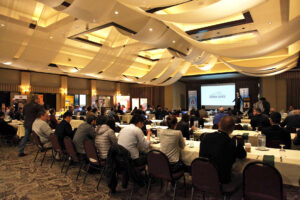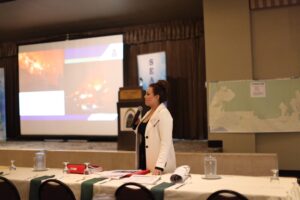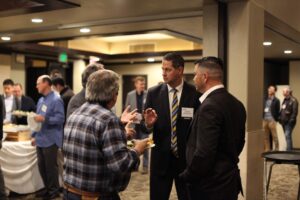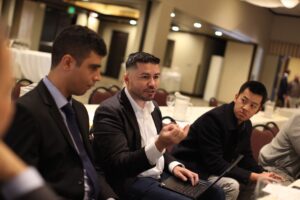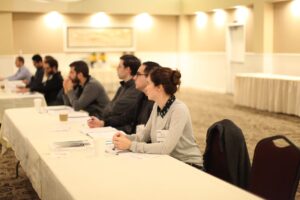SEAOSC 2019 Safer Cities Technical Summit
On Saturday, January 19, 2019, some of our Los Angeles office engineers spent the day at the SEAOSC 2019 Safer Cities Technical Summit. Subtitled “Fire, Earthquakes, Politics…The Challenges Still Facing Socal 25 Years after Northridge”, the technical program touched on many of the natural disasters faced by Southern California communities, the efforts being made to improve our building stock and the politics of both. The Summit ambitiously sought to provide meaningful content for structural engineers at every level of their career and included Safety Assessment Program Training for both new and renewing volunteers.
Technical Program:
The technical program included speakers from the structural engineering community, city building officials, and other engaged presenters. Topics included:
- Insights into soft-story retrofits occurring throughout the region, local ordinances and legislative efforts.
- The Steel Committee presented on “Lessons Learned and Unlearned” since the Northridge Earthquake
- SAP Volunteers shared their experiences during their deployment after the quake.
- The documentary film “Quake Heroes” had its SEAOSC premiere.
- The SEAOC Fire Ad Hoc Committee shared a presentation by Yolanda Bundy, Building Official for the City of Ventura, and “Observations from Paradise” by Dr. Glassman, who was deployed to Paradise, California, during the Camp Fire, as part of the FEMA US&R team as their structural advisor

Yolanda Bundy presenting at the 2019 Safer Cities Technical Summit
“Thank you to the structural engineering community for embracing this event- the energy in the room was amazing! I found the unbelievable work done by Ms. Yolanda Bundy and the City of Ventura since the Thomas fire to be profoundly inspiring. We clearly have work to do quickly regarding how some of the soft story retrofits have been completed. Fantastic job by Daniel Zepeda and Garrett Mills in outlining the issue. To all of the speakers, the attendees, the wonderful sponsors, and the SEAOSC Board, thank you for everything that you did to make this event happen.”
– Matt Barnard, Degenkolb Engineers’ Principal and SEAOSC Treasurer

Degenkolb’s Matt Barnard and Daniel Zepeda conversing with other attendees
“It was great to see our engineering community come together 25 years after the Northridge Earthquake and hear some of the stories from those that responded to the event.”
– Daniel Zepeda, Principal at Degenkolb Engineers and
Chair of the SEAOSC Existing Buildings Committee
“In light of the devastation caused by the recent fires in California, it was great to witness the developing conversation about how we as structural engineers can contribute to the recovery process.”
–Alfred Tran, S.E., Degenkolb Engineers’ Project Engineer

Degenkolb’s Daniel Zepeda and Alfred Tran participating in a group discussion
SAP Training:
The program also offered Safety Assessment Program (SAP) training for the attendees of the conference. Half day training was provided for those who wished to update their credentials and a full day training was also provided for first timers.
“After a natural disaster, CalOES contacts SEAOC for engineers that are SAP certified to help tag buildings. Right after the 1994 earthquake, SEAOSC evaluators helped CalOES tag the 62,000 structures damaged by the strong shaking in the Southern California region. This very important work helps communities bounce back after a disaster. By providing the SAP training class annually, we are hoping that most, if not all, of our SEAOSC members are trained and ready to deploy when needed.”
– Laura Basualdo, Project Engineer and Co-Chair of the
SEAOSC DES planned the SAP training

Degenkolb engineers listening to presentations (From left to right):
Christian Hall, Chris Hilson, Oscar Hernandez, and Laura Basualdo
“The Summit provided an excellent opportunity for our profession to prepare for the next major seismic event—not just by providing a forum to discuss current and future policy & practice, but also by offering SAP training to be ready and capable of volunteering rapid response to affected communities.”
– Chris Hilson, Ph.D., S.E., Degenkolb Engineers’ Project Engineer
